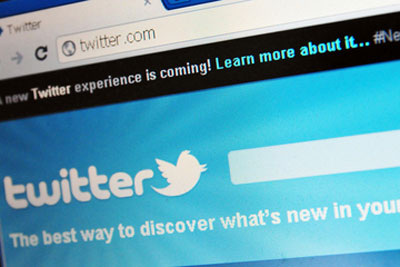
Twitter amplifies political echo chambers, hobbyists live in isolated bubbles, and a few trusted information sources still set the conversational agenda for breaking news.
That's the picture gleaned from tracking thousands of conversations on Twitter, according to a new study.
Surprisingly, conversations on Twitter tend to take one of only six different trajectories, said study co-author Marc Smith, the director of the Social Media Research Foundation, which conducted the study along with the Pew Research Center.
"We think we're bringing the first aerial photographs of crowds in social media," Smith told Live Science.
When people physically congregate in public squares for political demonstrations, for instance, pictures reveal a lot about what's going on, Smith said. "Now people are gathering in the hashtags and fan pages and chat rooms of social media; they are crowds nonetheless, but we can't see them."
Social media impacts
Since Facebook, Twitter and other social media networks have become ascendant, social media's impact on society has been hotly debated. Some studies have found social media can mobilize society and foster collaborations, but can also increase people's sense of loneliness or isolation. [Top 10 Golden Rules of Facebook]
Sign up for the Live Science daily newsletter now
Get the world’s most fascinating discoveries delivered straight to your inbox.
Other research has found social media makes people seem smarter, but that it also ruins their concentration. But tracking how social networks spread and share information has been trickier, in part because it required niche mathematical tools to analyze, Smith said.
Social graph
To alleviate that problem, the researchers created an open-source software tool that allows anyone to analyze the "shape" of conversations created around certain topics. These graphs map how different social media users are linked, for instance, using hashtags.
The study found six conversation shapes frequently formed. Divisive topics, such as politics or abortion rights, create the stereotypical echo chamber, where large clusters of people all link to like-minded folks, but rarely link to other side of the spectrum. This tendency to "listen" only to people who agree with you could increase polarization on controversial topics.
Other conversations formed tight groups with few links to anyone outside that group. Hobbyists may follow and retweet a specific hashtag that almost nobody outside their niche interest group even knows about.
Mentions of celebrities or well-known brands often crop up in isolated pockets but don't spark conversations between users. For instance, hundreds of people might tweet about getting off a United Airlines flight, but none of those people are interacting, Smith said.
Other network shapes included community clusters, where, for instance, global news stories spark several smaller conversations all focusing on different angles or points of view. Then, there are traditional broadcast networks, which look like a wheel with a central hub. Here, news organizations' content may be spread to many people, very few of whom are connected to each other. Other Twitter conversations take the opposite wheel shape — for instance, a technical support Twitter handle may get tons of complaint tweets from customers, and that user then responds individually to each of them.
Changing the conversation
The findings could help people better understand how to leverage social media. For instance, analyzing the social graph could create a kind of political "polarization thermometer" for specific topics, said study co-author Ben Shneiderman, a computer scientist at the University of Maryland.
People seeking to cross that divide could map the conversational landscape, then reach out to people who are on the edges of a polarized group, "who are already closer to you or who are leaning in your direction," Shneiderman told Live Science.
Understanding how conversations form could also help small organizations strategically grow their social media profile, Smith said.
The study was published today (Feb. 20) by the Pew Research Center and the Social Media Research Foundation.
Tia Ghose on Twitter and Google+. Follow Live Science @livescience, Facebook & Google+. Original article on Live Science.

Tia is the managing editor and was previously a senior writer for Live Science. Her work has appeared in Scientific American, Wired.com and other outlets. She holds a master's degree in bioengineering from the University of Washington, a graduate certificate in science writing from UC Santa Cruz and a bachelor's degree in mechanical engineering from the University of Texas at Austin. Tia was part of a team at the Milwaukee Journal Sentinel that published the Empty Cradles series on preterm births, which won multiple awards, including the 2012 Casey Medal for Meritorious Journalism.









